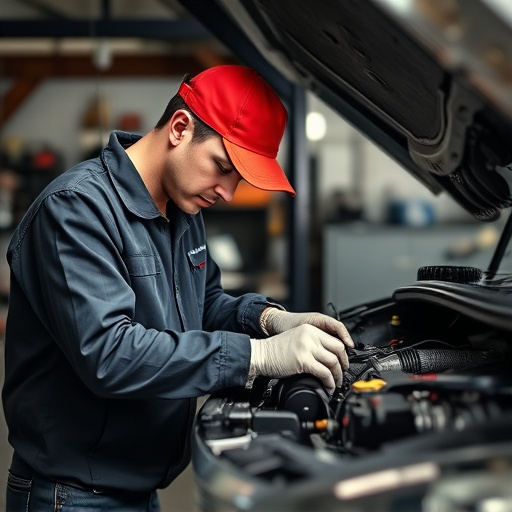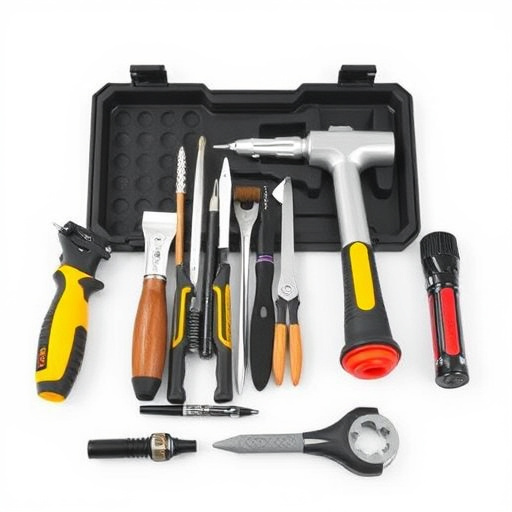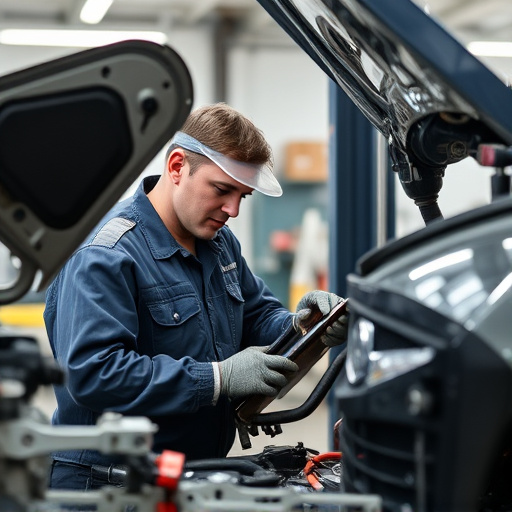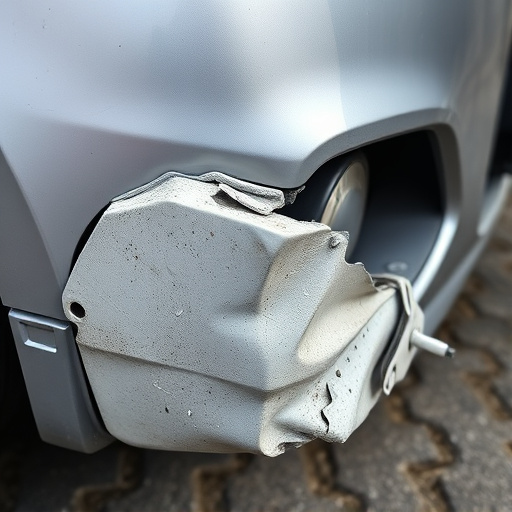Composite material repair in automotive body shops presents unique challenges due to materials' intricate structure and hidden damage potential. It requires specialized training, precise techniques, and controlled environments for successful diagnostics and repairs. Precision is crucial, as errors can compromise structural integrity and vehicle lifespan. Skilled technicians need comprehensive training in composite properties and methods to restore layers accurately, ensuring safety, performance, and extended vehicle life.
Composite material repair is a specialized art demanding technical expertise and meticulous precision. These materials, known for their strength-to-weight ratio, are widely used across industries. However, their unique properties present challenges in repair processes. This article explores the intricate world of composite material repair, delving into techniques, tools, and the critical need for skilled technicians to ensure structural integrity and longevity. From understanding material characteristics to precise repair methods, we unravel the secrets behind successful composite restoration.
- Unique Properties of Composite Materials: Challenges and Opportunities
- Techniques for Composite Material Repair: Tools and Training Required
- Precision in Repair: Ensuring Structure Integrity and Longevity
Unique Properties of Composite Materials: Challenges and Opportunities

Composite materials, with their unique combination of strength and weight efficiency, have revolutionized various industries, from aerospace to automotive. These advanced materials, often comprised of a matrix (like resin) reinforced with fibers (carbon or glass), offer exceptional performance in extreme conditions. However, this very uniqueness presents significant challenges when it comes to composite material repair. Unlike traditional metal repairs, composite damage may not always be visible on the surface; internal fractures can go unnoticed until they escalate, posing complex diagnostics and repair requirements.
The intricate nature of composite material repair demands precision and technical skill. Auto body services and vehicle collision repair professionals need specialized training and equipment to identify and address these hidden issues effectively. Moreover, composite materials’ sensitivity to temperature and moisture during the repair process necessitates controlled environments and precise techniques. While these challenges exist, the versatility and durability of composites offer tremendous opportunities for innovative auto repair solutions, ensuring that vehicles with composite components receive the expert care they require.
Techniques for Composite Material Repair: Tools and Training Required

Composite material repair requires a unique set of skills and knowledge due to its intricate nature. Techniques for repairing composite materials involve specialized tools and precision techniques, ensuring structural integrity and aesthetic appeal. The process often demands expertise in identifying damage, preparing surfaces, and accurately matching composites to create seamless repairs.
Automotive body shops specializing in Mercedes Benz collision repair, for instance, should invest in comprehensive training programs for their technicians. This includes hands-on experience with a variety of composite materials commonly used in modern vehicles. Advanced training ensures that auto repair near me services are not only effective but also reliable, addressing the specific challenges posed by composite material repairs.
Precision in Repair: Ensuring Structure Integrity and Longevity
Precision is paramount when it comes to composite material repair, as even the slightest misstep can compromise structural integrity and reduce the longevity of the vehicle or component being repaired. Unlike traditional metal repairs, composite materials are made up of multiple layers of fibers and resins that must be carefully aligned and bonded together for optimal strength. Any error in the repair process, such as incorrect fiber orientation or inadequate curing times, can lead to weak points in the structure.
This is particularly crucial in auto body shops where vehicle body repair involving composite materials has become increasingly common. Skilled technicians must possess a deep understanding of composite material properties and repair techniques to ensure that each layer is precisely restored, maintaining the structural integrity and aesthetic appeal of the vehicle. This level of precision not only guarantees the safety and performance of the repaired vehicle but also extends its overall lifespan.
Composite material repair requires a unique blend of technical skill and precision due to the intricate nature and diverse properties of composite materials. As these materials gain popularity across various industries, specialized techniques and thorough training become paramount. By understanding the challenges and opportunities presented by composites, professionals can master advanced repair methods, ensuring structural integrity and extending the lifespan of composite components—a crucial aspect in maintaining high-performance and reliable structures within the composite material repair domain.













